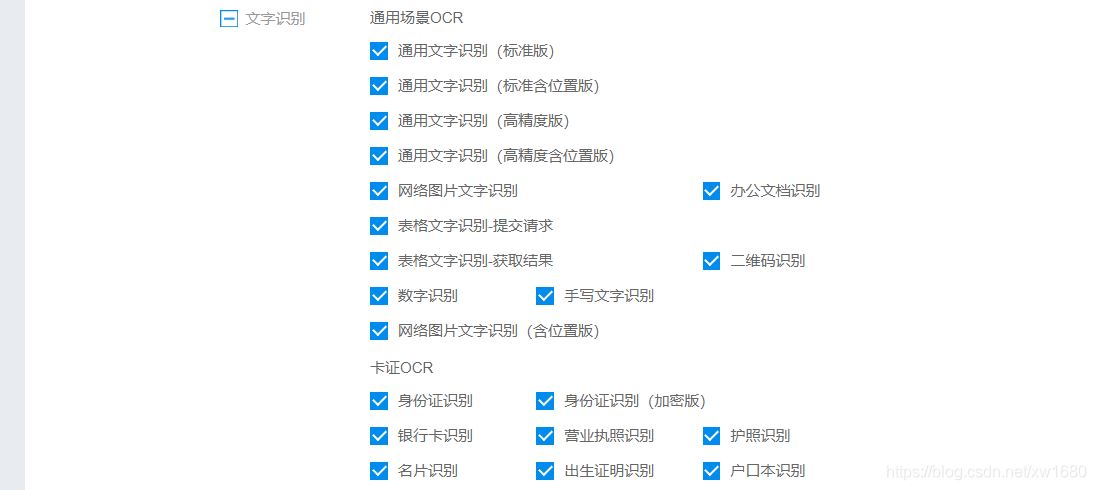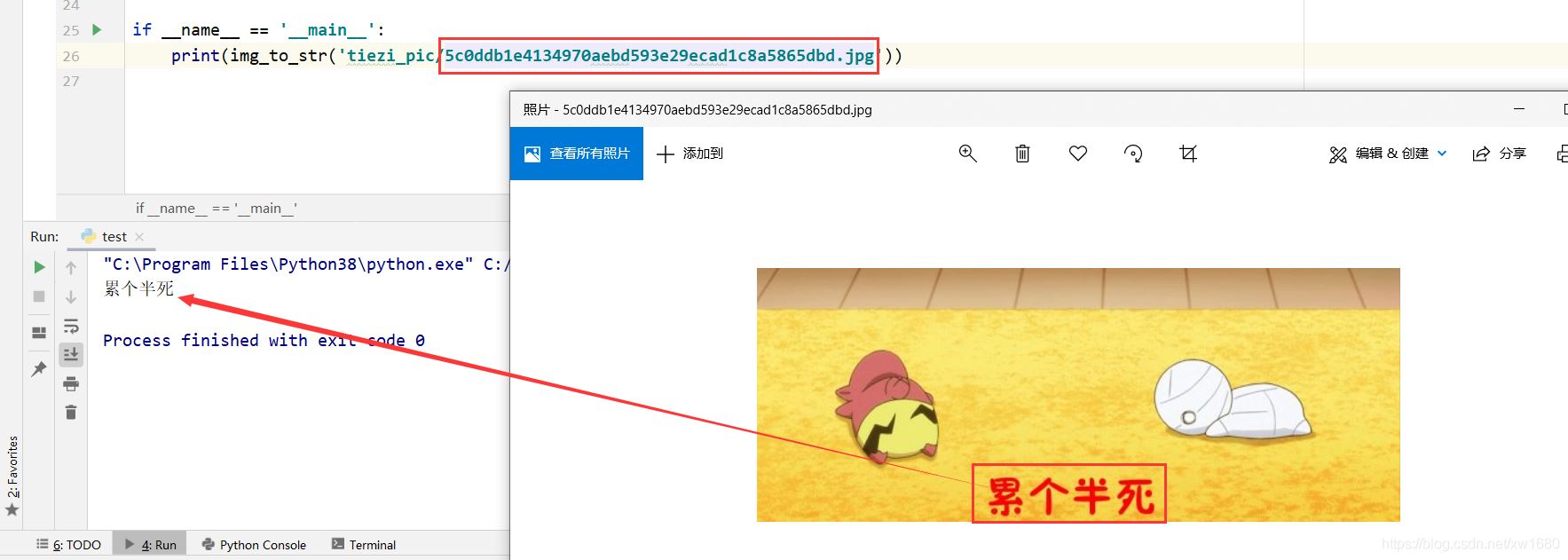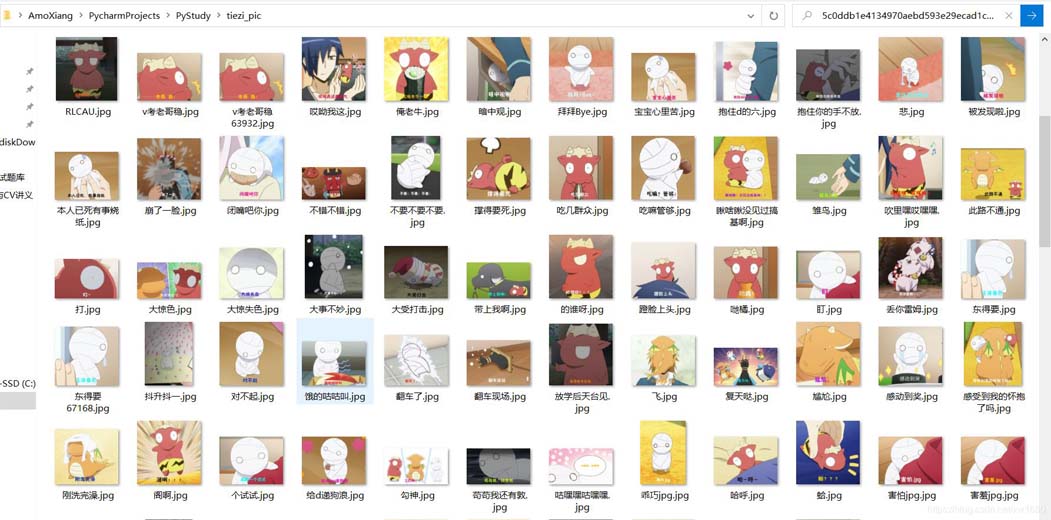Python基于百度AI实现抓取表情包
本文先抓取网络上的表情图像,然后利用百度 AI 识别表情包上的说明文字,并利用表情文字重命名文件,这样当发表情包时,不需要逐个打开查找,直接根据文件名选择表情并发送。
一、百度 AI 开放平台的 Key 申请方法本例使用了百度 AI 的 API 接口实现文字识别。因此需要先申请对应的 API 使用权限,具体步骤如下:
在网页浏览器(比如 Chrome 或者火狐) 的地址栏中输入 ai.baidu.com,进入到百度云 AI 的官网,在该页面中单击右上角的 控制台 按钮。

进入到百度云 AI 官网的登录页面,输入百度账号和密码,如果没有,可以单击 立即注册 超链接进行注册申请。
登录成功后,进入到百度云 AI 官网的控制台页面,单击左侧导航的 产品服务,展开列表,在列表的最右侧下方看到有 人工智能 的分类,然后选择 图像识别,或者直接选择 文字识别,如下图所示。

进入图像识别一概览 页面,要使用百度云 AI 的 API,首先需要申请权限,申请权限之前需要先创建自己的应用,因此单击 创建应用按钮,如下图所示。

进入到 创建应用 页面,该页面中需要输入应用的名称,选择应用类型,并选择接口,注意:这里的接口可以多选择一些,把后期可能用到的接口全部选择上,这样,在开发其他实例时,就可以直接使用了;选择完接口后,选择文字识别包名,这里选择 不需要,输入应用描述,单击 立即创建 按钮,如下图所示。



创建完成后,单击 返回应用列表 按钮,页面跳转到应用列表页面,在该页面中即可查看创建的应用,以及百度云自动为您分配的 AppID,API Key,Secret Key,这些值根据应用的不同而不同,因此一定要保存好,以便开发时使用。

本例在百度贴吧中找到了一些自制的表情包:https://tieba.baidu.com/p/5522091060现在想把图片都爬下来,具体操作步骤如下:
Network 抓包看下返回的数据是否和 Element 一致,即是否包含想要的数据,而不是通过 JS 黑魔法进行加载的。复制下第一个图的图片链接,到 Network 选项卡里的 Response 里查找一下。

在 Network 抓包中没有发现 Ajax 动态加载数据的踪迹。
点击第二页,抓包发现了 Ajax 加载的痕迹。

以第一个图的 url 搜下,同样可以找到。
三个参数猜测 pn 为 page_number,即页数,postman 或者自己写代码模拟请求,记得塞入 Host 和 X-Requested-With,验证 pn=1 是否为第一页数据,验证通过,即所有页面数据都可以通过这个接口拿到。
先加载拿到末页是第几页,然后走一波循环遍历即可解析数据获得图片 url,写入文件,使用多个线程进行下载,详细代码如下。
# 抓取百度贴吧某个帖子里的所有图片import requestsimport timeimport threadingimport queuefrom bs4 import BeautifulSoupimport chardetimport ostiezi_url = 'https://tieba.baidu.com/p/5522091060'headers = { ’Host’: ’tieba.baidu.com’, ’User-Agent’: ’User-Agent: Mozilla/5.0 (Windows NT 10.0; Win64; x64) AppleWebKit/537.36 (KH’ ’TML, like Gecko) Chrome/90.0.4430.212 Safari/537.36’,}pic_save_dir = ’tiezi_pic/’if not os.path.exists(pic_save_dir): # 判断文件夹是否存在,不存在就创建 os.makedirs(pic_save_dir)pic_urls_file = ’tiezi_pic_urls.txt’download_q = queue.Queue() # 下载队列# 获得页数def get_page_count(): try:resp = requests.get(tiezi_url, headers=headers, timeout=5)if resp is not None: resp.encoding = chardet.detect(resp.content)[’encoding’] html = resp.text soup = BeautifulSoup(html, ’lxml’) a_s = soup.find('ul', attrs={’class’: ’l_posts_num’}).findAll('a') for a in a_s:if a.get_text() == ’尾页’: return a[’href’].split(’=’)[1] except Exception as e:print(str(e))# 下载线程class PicSpider(threading.Thread): def __init__(self, t_name, func):self.func = functhreading.Thread.__init__(self, name=t_name) def run(self):self.func()# 获得每页里的所有图片URLdef get_pics(count): params = {’pn’: count,’ajax’: ’1’,’t’: int(time.time()) } try:resp = requests.get(tiezi_url, headers=headers, timeout=5, params=params)if resp is not None: resp.encoding = chardet.detect(resp.content)[’encoding’] html = resp.text soup = BeautifulSoup(html, ’lxml’) imgs = soup.findAll(’img’, attrs={’class’: ’BDE_Image’}) for img in imgs:print(img[’src’])with open(pic_urls_file, ’a’) as fout: fout.write(img[’src’]) fout.write(’n’) return None except Exception:pass# 下载线程调用的方法def down_pics(): global download_q while not download_q.empty():data = download_q.get()download_pic(data)download_q.task_done()# 下载调用的方法def download_pic(img_url): try:resp = requests.get(img_url, headers=headers, timeout=10)if resp.status_code == 200: print('下载图片:' + img_url) pic_name = img_url.split('/')[-1][0:-1] with open(pic_save_dir + pic_name, 'wb+') as f:f.write(resp.content) except Exception as e:print(e)if __name__ == ’__main__’: print('检索判断链接文件是否存在:') if not os.path.exists(pic_urls_file):print('不存在,开始解析帖子...')page_count = get_page_count()if page_count is not None: headers[’X-Requested-With’] = ’XMLHttpRequest’ for page in range(1, int(page_count) + 1):get_pics(page)print('链接已解析完毕!')headers.pop(’X-Requested-With’) else:print('存在') print('开始下载图片~~~~') headers[’Host’] = ’imgsa.baidu.com’ fo = open(pic_urls_file, 'r') pic_list = fo.readlines() threads = [] for pic in pic_list:download_q.put(pic) for i in range(0, len(pic_list)):t = PicSpider(t_name=’线程’ + str(i), func=down_pics)t.daemon = Truet.start()threads.append(t) download_q.join() for t in threads:t.join() print('图片下载完毕')
运行结果:

下面通过 OCR 文字识别技术,直接把表情里的文字提出来,然后来命名图片,这样就可以直接文件搜索表情关键字,可以快速找到需要的表情图片。使用谷歌的 OCR 文字识别引擎:Tesseract,对于此类大图片小文字,不太适合,识别率太低,甚至无法识别,这时使用百度云 OCR 比较合适,它能够自动定位到图片中具体位置,并找出图片中所有的文字。
三、使用 Baidu-aip申请百度 AI 的应用 key 之后,就可以在本地系统中安装 Baidu-aip,代码如下:
pip install baidu-aip
先识别一张图片,看看效果如何:
from aip import AipOcr# 新建一个AipOcr对象config = { ’appId’: ’填写自己的appId’, ’apiKey’: ’填写自己的apiKey’, ’secretKey’: ’填写自己的secretKey’}client = AipOcr(**config)# 识别图片里的文字def img_to_str(image_path): # 读取图片 with open(image_path, ’rb’) as fp:image = fp.read()# 调用通用文字识别, 图片参数为本地图片 result = client.basicGeneral(image) # 返回拼接结果 if ’words_result’ in result:return ’n’.join([w[’words’] for w in result[’words_result’]])if __name__ == ’__main__’: print(img_to_str(’tiezi_pic/5c0ddb1e4134970aebd593e29ecad1c8a5865dbd.jpg’))
运行程序,结果如下图所示:

百度 AI 返回的是一个 JSON 格式数据,如下所示。返回一个字典对象,包含 log_id、words_result_num、words_result 三个键,其中 words_result_num 表示识别的文本行数,words_result 是一个列表,每个列表项目记录一条识别的文本,每个项目返回一个字典对象,包含 words 键,words 表示识别的文本。
{’words_result’: [{’words’: ’o。o’}, {’words’: ’6226-16:59’}, {’words’: ’绝望jpg’}], ’log_id’: 1393611954748129280, ’words_result_num’: 3}o。o6226-16:59绝望jpg
由于每个图片中可能包含很多文字信息,如水印的日期文字,以及个别特殊的文字符号被误解析,我们需要提出的是汉字或字母信息,同时可能会包含多条汉字信息,本例选择汉字或字母最长的一条来命名文件。完整的示例代码如下:
# 识别图片文字,批量命名图片文字import osfrom aip import AipOcrimport reimport datetime# 新建一个AipOcr对象config = { ’appId’: ’填写自己的appId’, ’apiKey’: ’填写自己的apiKey’, ’secretKey’: ’填写自己的secretKey’}client = AipOcr(**config)pic_dir = r'tiezi_pic/'# 读取图片def get_file_content(file_path): with open(file_path, ’rb’) as fp:return fp.read()# 识别图片里的文字def img_to_str(image_path): image = get_file_content(image_path) # 调用通用文字识别, 图片参数为本地图片 result = client.basicGeneral(image) # 结果拼接返回 words_list = [] if ’words_result’ in result:if len(result[’words_result’]) > 0: for w in result[’words_result’]:words_list.append(w[’words’]) file_name = get_longest_str(words_list) print(file_name) file_dir_name = pic_dir + str(file_name).replace('/', '') + ’.jpg’ if os.path.exists(file_dir_name): # 处理文件重名问题sec = datetime.datetime.now().microsecond # 获取当前毫秒时值file_dir_name = pic_dir + str(file_name).replace('/', '') + str(sec) + ’.jpg’ try:os.rename(image_path, file_dir_name) except Exception:print(' 重命名失败:', image_path, ' => ', file_name)# 获取字符串列表中最长的字符串def get_longest_str(str_list): pat = re.compile(r’[u4e00-u9fa5A-Za-z]+’) str = max(str_list, key=hanzi_len) result = pat.findall(str) return ’’.join(result)def hanzi_len(item): pat = re.compile(r’[u4e00-u9fa5]+’) sum = 0 for i in item:if pat.search(i): sum += 1 return sum# 遍历某个文件夹下所有图片def query_picture(dir_path): pic_path_list = [] for filename in os.listdir(dir_path):pic_path_list.append(dir_path + filename) return pic_path_listif __name__ == ’__main__’: pic_list = query_picture(pic_dir) if len(pic_list) > 0:for i in pic_list: img_to_str(i)
运行程序,结果如下图所示:

到此这篇关于Python基于百度AI实现抓取表情包的文章就介绍到这了,更多相关Python 抓取表情包内容请搜索好吧啦网以前的文章或继续浏览下面的相关文章希望大家以后多多支持好吧啦网!
相关文章:

 网公网安备
网公网安备